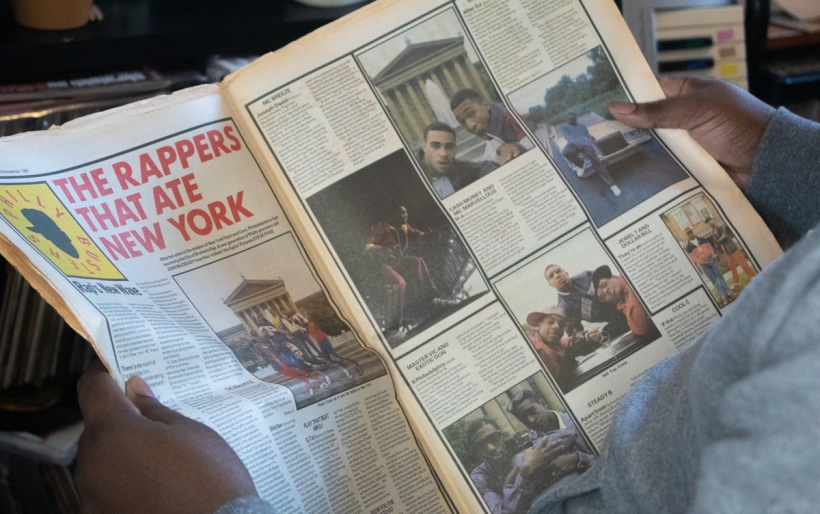
photo by Melissa Simpson for WXPN
That time the N.M.E. came to Philly in ’87 to document Rap’s New Wave
Today, the story of the birth of hip-hop culture is well established and widely known. The tale of how DJ Kool Herc and his sister Cindy Campbell helped initiate a global cultural movement with a single party in a small recreation room in the Bronx can be recited by even the most casual music fan. In recent years, the history of Hip Hop and how it has developed in different urban centers outside of the Bronx, has continued to be elaborated on by scholars and participants throughout the country. From Hassan Pore and Ron Lawrence’s 2012 Founding Fathers documentary, which uncovers scenes in Brooklyn and Queens in the early 70s that developed concurrently with the Bronx, to Oliver Wang’s book, Legions Of Boom highlighting the contribution of Filipino-American DJ crews in the San Francisco Bay Area, there are many contemporary works that add to and enrich the story of how Hip Hop culture came to be what it is today.
With all of our access to information and an ever-growing and deepening understanding of hip-hop history, the story of Philadelphia’s first Hip Hop generation remains largely untold.
Not only was Philly the largest major city next to New York and Jersey, by the time New York hip-hop emerged, Philly was already equipped with its own indigenous DJ culture, and graffiti art scenes. Much like any 20th-century locale where Black folks lived, Philly also had its own unique social dancing and rhyming/rhythm-talking cultures. Pioneering DJs and crews like Grandmaster Nell, Lightning Rich, Disco Rat, Sex Machine, Grandwizard Rasheen, and more were bringing the music to the parks and block parties, while Philly-based artists like Lady B (“To The Beat Y’all”) and Jocko Henderson (“Rhythm Talk”) laid down some of the earliest rap records ever.
As rap music evolved and exploded in popularity, a new class of Philly rappers emerged, garnering local and national acclaim. For the November 7, 1987 issue, famed-British music magazine, N.M.E. (New Music Express) sent music journalist John McCready and Photographer Steve Pyke across the Atlantic to document Philly’s burgeoning rap scene. With the audacious headline Philly Busters: The Rappers That Ate New York, McCready and Pyke’s piece is a 3-page spread featuring a brief overview of what it describes as “Rap’s New Wave,” the Philly scene, featuring profiles of each act, and photos shot on the art museum steps and throughout the city.

McCready offers a brief but vivid detailing of Hip Hop’s emergence up to that point. “It’s almost 10 years since ‘Rapper’s Delight’ told the world that something was happening in New York. Black music was shedding skin, stealing the street, and just like always, staying one step ahead.” McCready goes on to identify Philly as an emerging hot spot for the new music. “Now Philadelphia is ready to make some noise. People like MC Breeze, Steady B, and Cash Money are making records so sharp they will shock you.”
With individual features on Schoolly D, DJ Jazzy Jeff and the Fresh Prince, Yvette Money, Cash Money And Marvelous, MC Breeze, Lord Supreme, and DJ Groove, Tat Money, Master Vic & Exotic Don, Cool C, Jewel T & Dollar Bill, DJ Bones And Malika Love, the NME feature remains one of the most comprehensive and detailed explorations of Philly Hip Hop published at the time. With further nods to early Philly pioneers like B Force, Grand Wizard Rasheen, and Lady B, Pop Art Records, as well as a mention of the legendary After Midnight club in Center City, McCready’s article is a full-bodied study of Philly hip-hop’s first-generation and a special gem that helps flesh out our understanding of the rich history of hip-hop culture in the city of Philadelphia.
